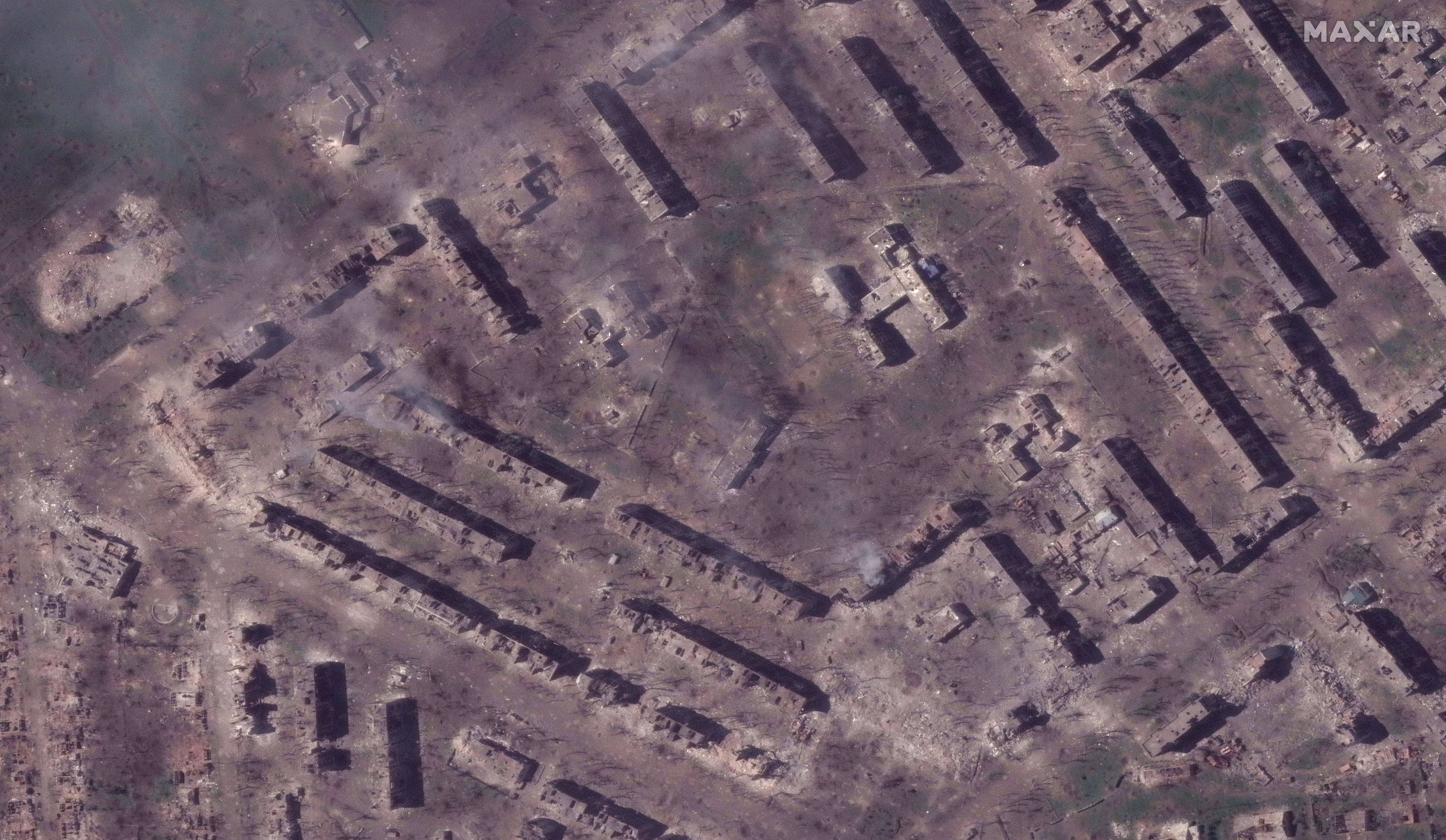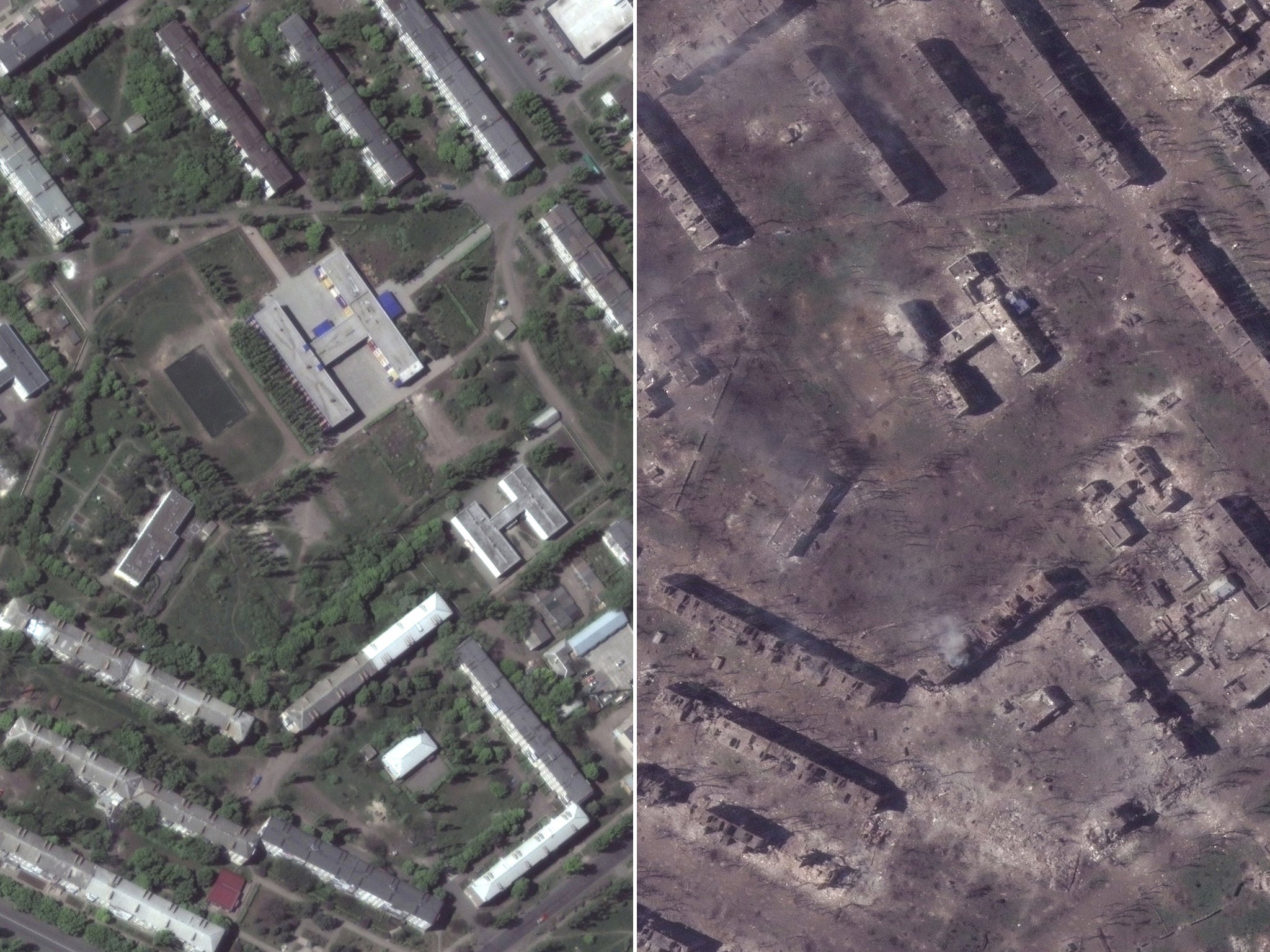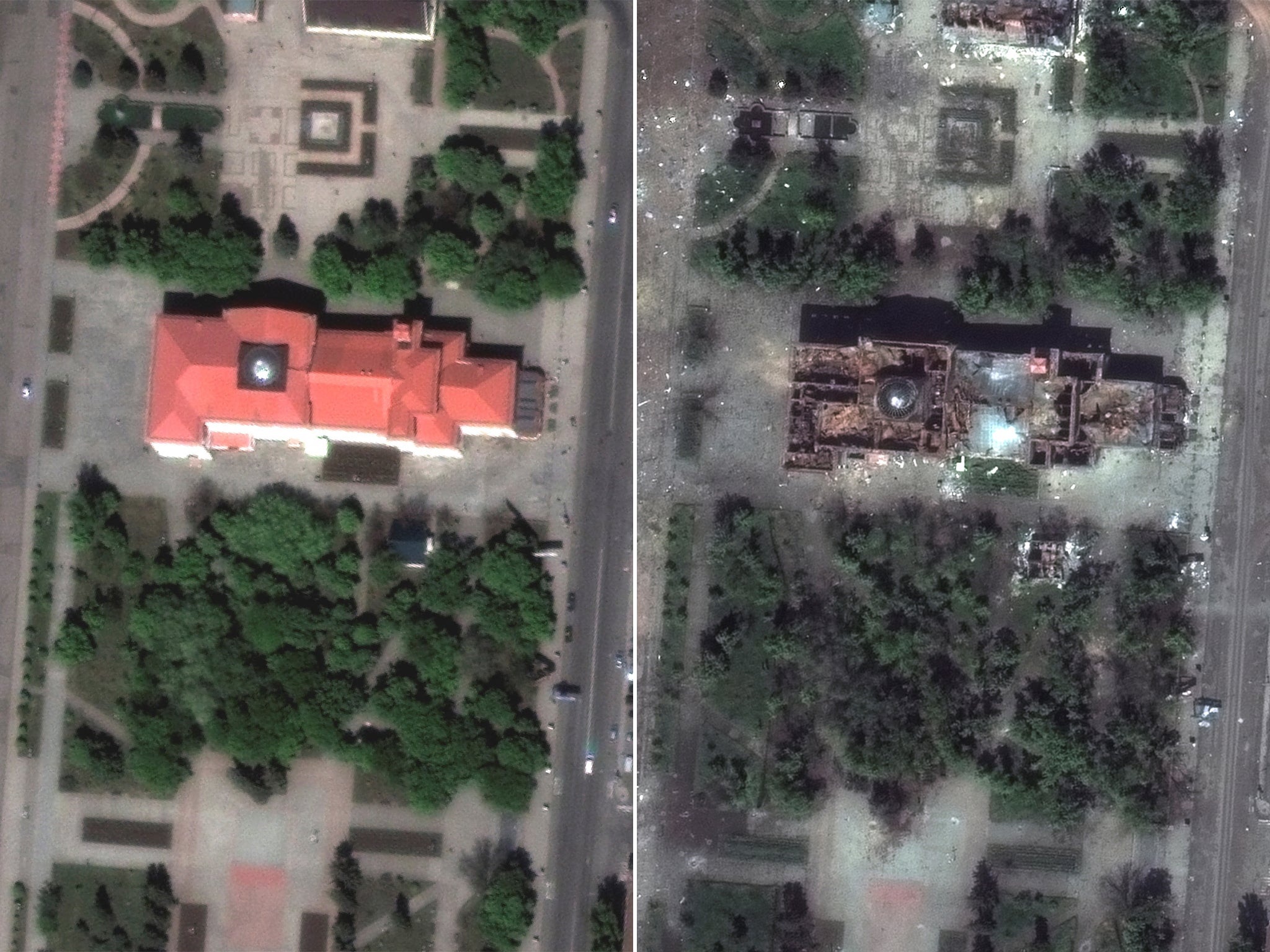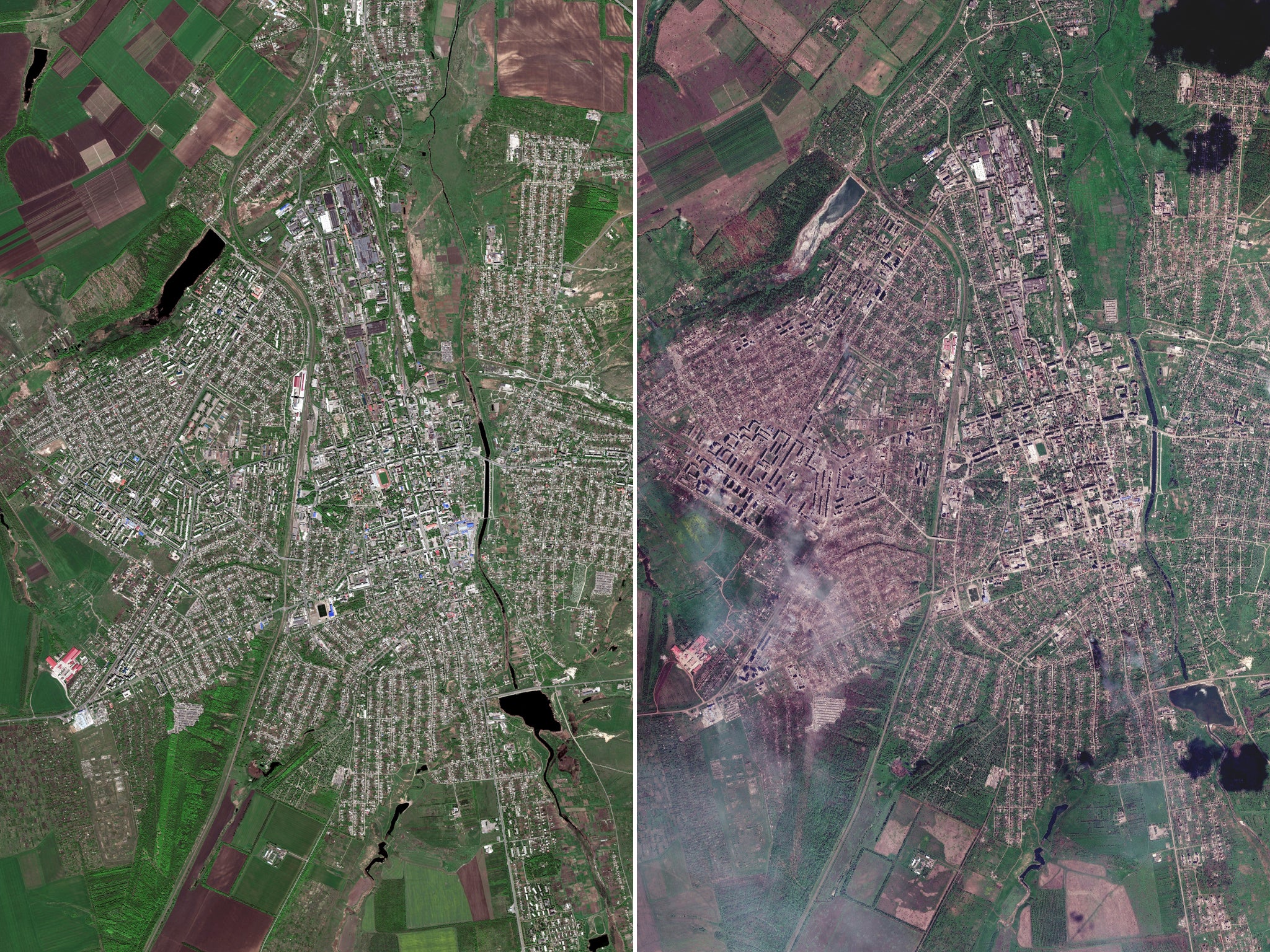Devastation of Putin’s war on Ukraine laid bare in new satellite images
Rows of apartment buildings, schools, stores, and other infrastructure reduced to ashes

Your support helps us to tell the story
From reproductive rights to climate change to Big Tech, The Independent is on the ground when the story is developing. Whether it's investigating the financials of Elon Musk's pro-Trump PAC or producing our latest documentary, 'The A Word', which shines a light on the American women fighting for reproductive rights, we know how important it is to parse out the facts from the messaging.
At such a critical moment in US history, we need reporters on the ground. Your donation allows us to keep sending journalists to speak to both sides of the story.
The Independent is trusted by Americans across the entire political spectrum. And unlike many other quality news outlets, we choose not to lock Americans out of our reporting and analysis with paywalls. We believe quality journalism should be available to everyone, paid for by those who can afford it.
Your support makes all the difference.Fresh satellite images taken from the frontline city of Bakhmut, that has become the epicentre of Ukraine’s conflict, reveal heavy destruction of infrastructure reduced to smouldering rubble.
The war for the control of Bakhmut has carried on for nearly 10 months now as Russian forces continued to bomb the critical mining city in a bid to seize control.
Rows of apartment buildings, schools, stores and other infrastructure across the length and breadth of the city have been reduced to rubble and ash, with smoke visible in several places, according to stark, high-resolution satellite images from Maxar technologies.
Other parts of the city that were seen lined with trees and parks a year ago are now completely stripped of all vegetation and are covered by brown and red coloured dust.
The satellite images have also captured signs of ongoing artillery shelling and fighting in the ghost town, along the eastern frontline of Ukraine.

Contrasting images taken from the first week of May last year showed theatres and stores in Bakhmut with their red-coloured roofs completely intact and surrounding green parks.

A satellite view of the neighbourhood taken on 15 May this year showed all structures completely flattened out as a result of the bombing.

Another image captured neatly lined school and apartments in one of the city’s neighbourhoods, that were demolished along with the green patches of land seen from last year missing from aerial visuals of this week.

A satellite view of a university and radio tower on Chaikovskoho street in the city showed the buildings hollowed out as a result of bombings and roads leading to the area completely faded out and damaged.

The eastern city, which has been the scene of some of the bloodiest fighting, has taken on a particular symbolic significance that outweighs its size. Despite the city not carrying any strategic advantage on the battlefield, Moscow has called it a stepping stone to other cities in the larger Donbas region.
Volodymyr Zelensky, after consulting his military commanders, refused to relent control of the city and move back to more secure positions.
There were intense attacks on Bakhmut in January and February, with Russian mercenary group Wagner claiming control of the city prematurely multiple times.
The battle for Bakhmut has continued to rage and Ukrainian troops have managed to regain territorial control of some parts of the town.
The 15-month-old war in Ukraine is at a turning point. Kyiv has kept its troops on the defensive for six months, while Russia mounted a winter campaign across the east and south of the country – bringing bloody combat but few territorial gains.
It has long been anticipated that Ukraine will launch a counteroffensive to recapture occupied territory.
Join our commenting forum
Join thought-provoking conversations, follow other Independent readers and see their replies
Comments